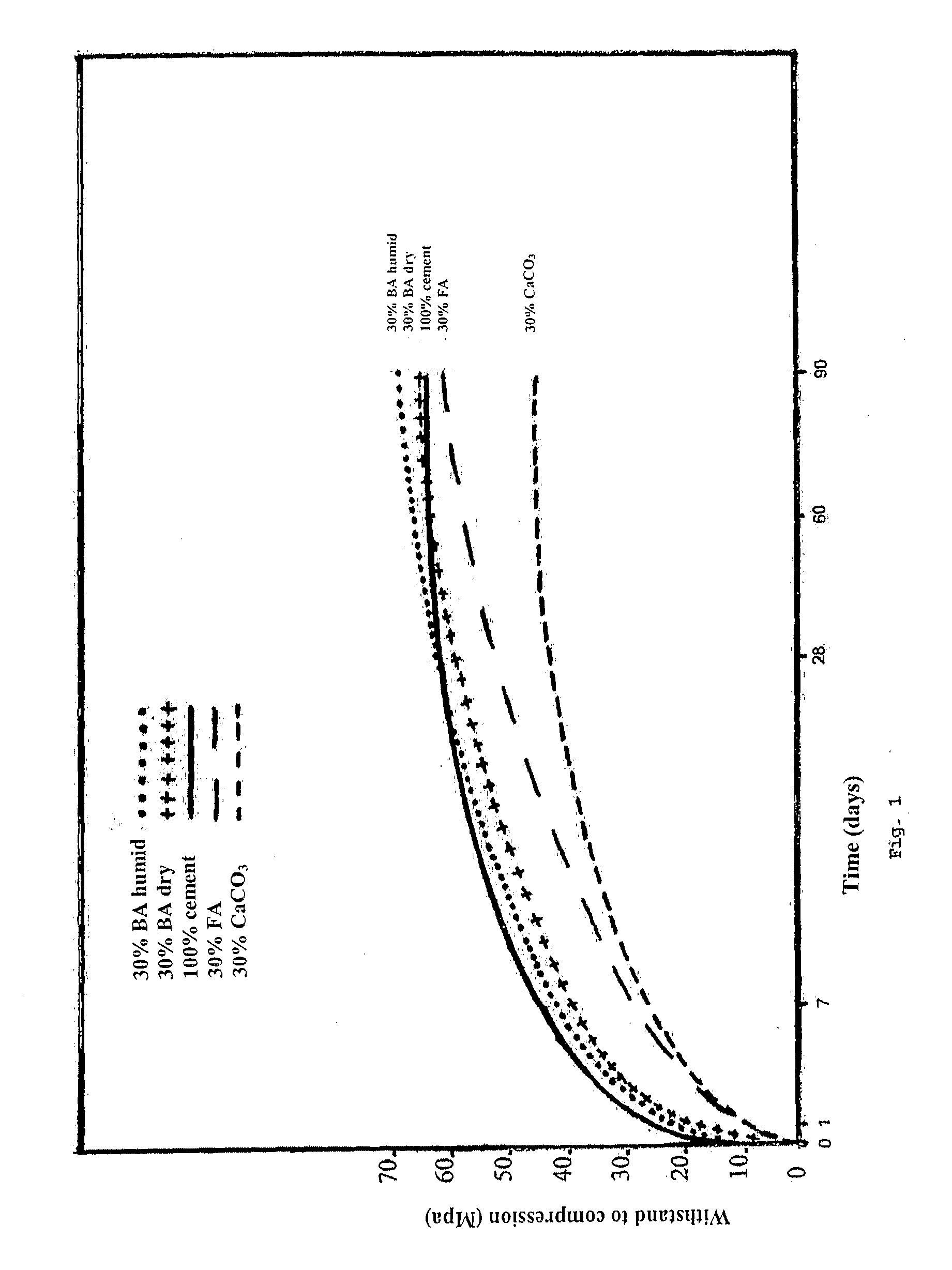Recovery and upgrading process of incineratior bottom ash from municipal solid waste
a technology of municipal solid waste and incineration, which is applied in the direction of solid separation, solid waste management, sustainable waste treatment, etc., can solve the problems of increasing insufficient process, increasing waste disposal, and increasing the amount of solid waste, so as to achieve the effect of increasing the material ph more quickly
- Summary
- Abstract
- Description
- Claims
- Application Information
AI Technical Summary
Benefits of technology
Problems solved by technology
Method used
Image
Examples
Embodiment Construction
[0021]The bottom ash, collected in a known way after a generic waste incineration process, after the suitable preliminary phases (indicated here as an example in a non-limiting sequence and with the option to reintroduce the fractions obtained from the subsequent filtrations or separations) consisting of the separation of the coarse fractions, dry or wet (preferably wet) pre-shredding, the separation of the ferromagnetic materials, the physical filtration or separation, as well as the possible separation, or at least the reduction of the amount of paramagnetic metals and / or anything else which is considered suitable based on specific features of the bottom ash or debris—which apparently also depends on the types of waste, on any waste sorting, on the treatments and incineration processes—through the known technologies, is collected and brought to shredding. Such shredding may occur, in a known manner, preferably in wet conditions, also for safety reasons linked to the high reactivit...
PUM
| Property | Measurement | Unit |
|---|---|---|
| diameter | aaaaa | aaaaa |
| diameter | aaaaa | aaaaa |
| diameter | aaaaa | aaaaa |
Abstract
Description
Claims
Application Information
 Login to View More
Login to View More - R&D
- Intellectual Property
- Life Sciences
- Materials
- Tech Scout
- Unparalleled Data Quality
- Higher Quality Content
- 60% Fewer Hallucinations
Browse by: Latest US Patents, China's latest patents, Technical Efficacy Thesaurus, Application Domain, Technology Topic, Popular Technical Reports.
© 2025 PatSnap. All rights reserved.Legal|Privacy policy|Modern Slavery Act Transparency Statement|Sitemap|About US| Contact US: help@patsnap.com

